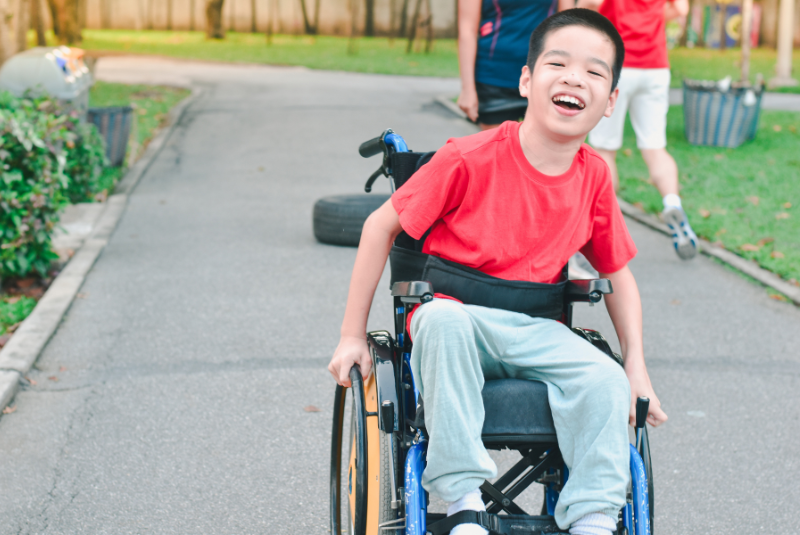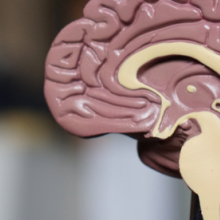Neurodegenerative disorders

Neurodegenerative disorders are a range of conditions that mainly affect neurons (nerve cells) in the brain. They are progressive so they get worse over time.
Neurons are the building blocks of the nervous system, which includes the brain and spinal cord. These nerve cells transmit information to other nerve cells, muscle or gland cells. In neurodegenerative disorders, neurons in the brain become damaged or die. As more neurons stop functioning, symptoms including problems with movement or mental functioning worsen.
These disorders occur more commonly in adulthood but rare forms of childhood neurodegenerative disorders exist.
Types that occur in young people include Parkinson’s disease, multiple sclerosis and Huntington’s disease. New types of childhood-onset neurodegenerative disease are also being discovered.
Certain neurodegenerative disorders can be inherited which means some young people live knowing they are at high risk of developing one. Research is finding new ways to delay conditions when symptoms occur.

Who does it affect?
Who does it affect?
- In Australia, about 80,000 people are living with Parkinson's disease (PD). One in five is diagnosed before age 50 which is termed young-onset Parkinson’s.
- One Australian is diagnosed with young onset Parkinson’s every three hours. They are likely to live with Parkinson's for longer than those who get the condition later in life.
- Juvenile Huntington’s disease is defined by the onset of symptoms before age 20 and accounts for up to one in 10 cases of the disease. An inherited genetic disorder, it causes destruction of brain cells, dementia, involuntary movements and reduced lifespan.
Our neurodegenerative disorder research
Our neurodegenerative disorder research
The main cause of early onset Parkinson’s is mutation in the Parkin gene. Our Neurogenetics Group showed a second gene, Parkin co-regulated gene (PACRG), is linked. We’re generating new mouse models with these impaired genes to learn about their function, understand causes and hopefully find better treatments.
We uncovered a new neurodegenerative disorder in which children experience developmental regression and severe epilepsy. We found a gene variation was the cause and are investigating underlying biology which may lead to treatments.
Other research to identify new Parkinson’s treatments comes after we found a gene believed to underlie rare cases of inherited PD. We began investigating how often it’s mutated and determining the role of a protein in the gene and nerve cells. This may determine why specific brain cells are lost, reveal why patients have different symptoms and progression varies.
BPAN (beta propeller associated neurodegeneration) stems from a faulty gene causing iron build-up in the brain, intellectual disability, seizures and deterioration. Our previous research, which was Australia’s only BPAN study and one of few worldwide, focused on iron accumulation which is the best prospect for cure. Using blood samples we grew nerve cells to model how BPAN affects the brain with the aim of testing drugs for treatments.
Impacts of our research

Impacts of our research
- We led a study that uncovered a new neurodegenerative disorder in which children had a normal or mild developmental delay before seizures in their first year followed by severe and progressive developmental regression and severe epilepsy. They had delayed myelination which is important for enabling nerve cells to transmit information and complex brain processes. We found a gene variation was the cause and can now study underlying biology which we hope will translate to treatments.
- Our world-first study found a physically active and mentally stimulating lifestyle could delay Huntington’s disease by an average of four years in those at higher risk of developing it.
- We identified a group of families with an unknown syndrome in which affected children develop normally until an infection or fever triggers a fatal neurodegenerative disorder. We found mutations in the NAXD gene required for proper recycling of vitamin B3 lead to toxic versions of B3 accumulating in cells, interfering with normal functions. We plan to convert skin cells from these patients into nerve cells to better understand the disorder and provide avenues for therapies.
- We discovered five genes linked to neurodegenerative and other disorders. One is believed to underlie rare cases in which Parkinson's disease is inherited. Find out more.
Our vision
Our vision
Our vision is to make life better for children with cruel and debilitating neurodegenerative disorders which rob them of a normal, healthy life. We’re aiming for prevention, earlier detection, treatment and cures for existing and unknown conditions. Studying these disorders in childhood may also help adult patients.





